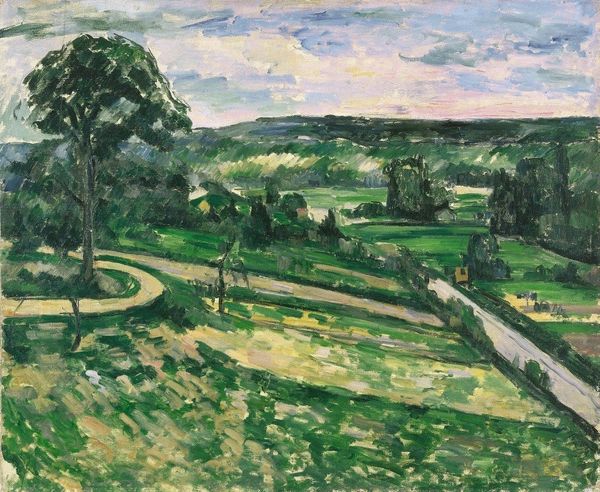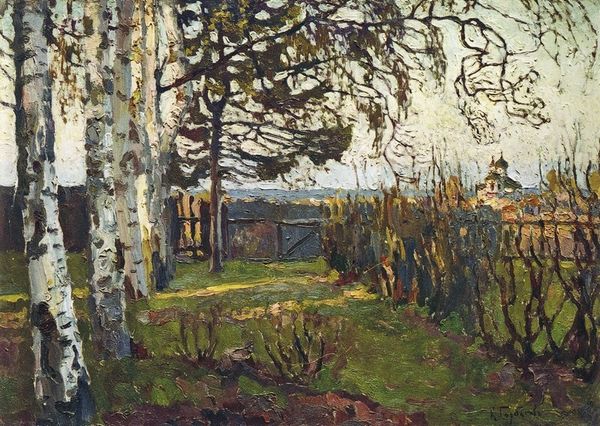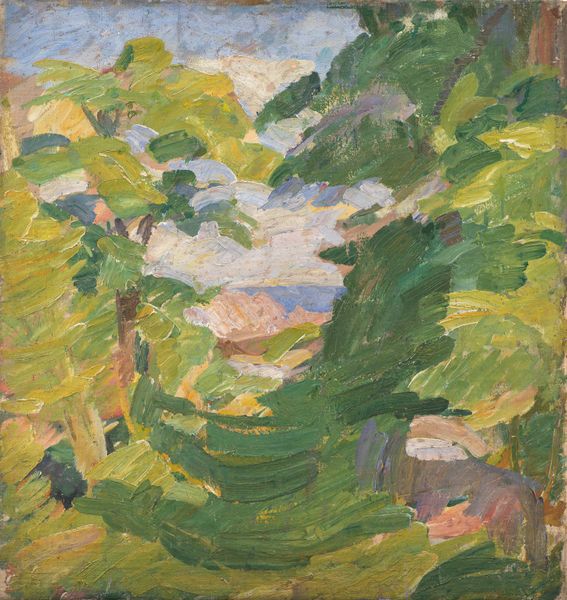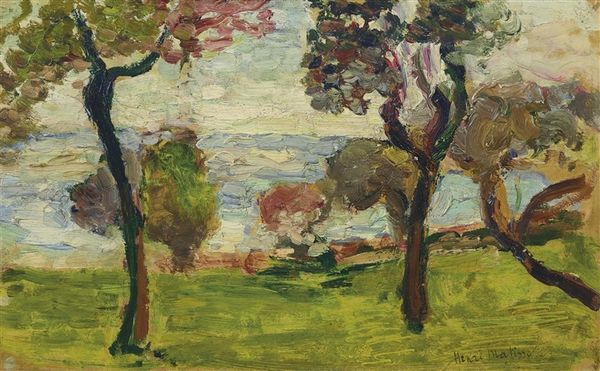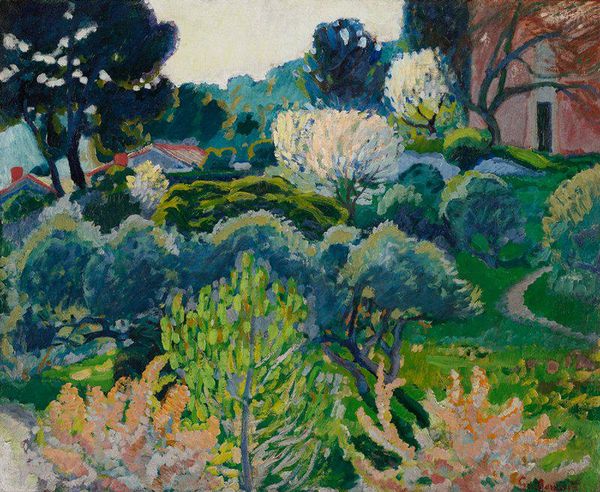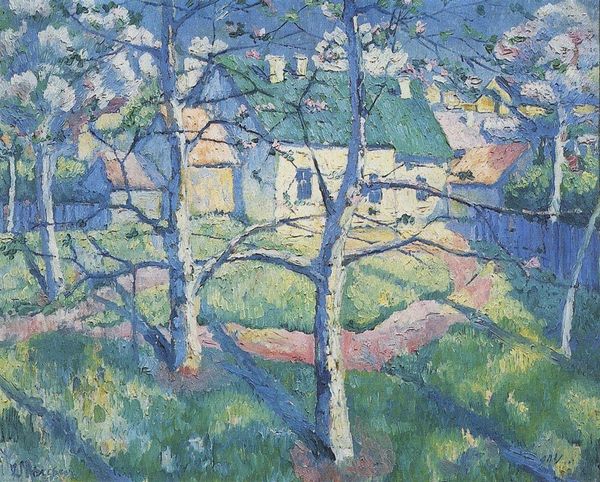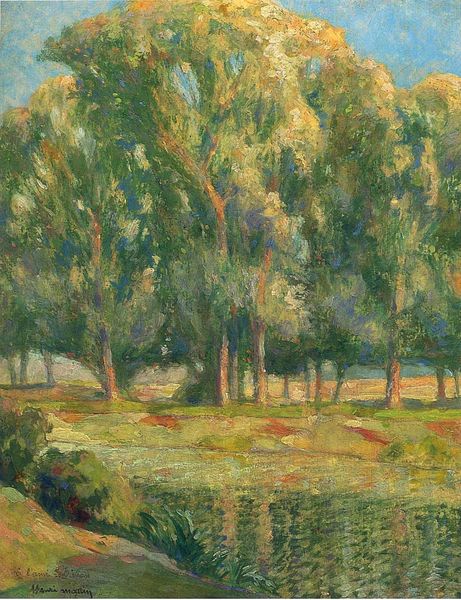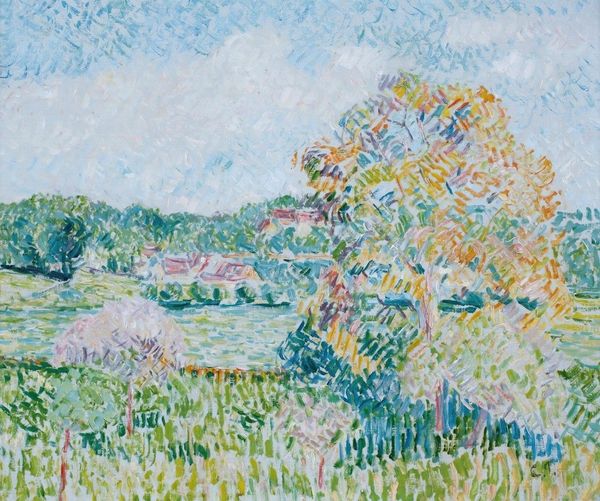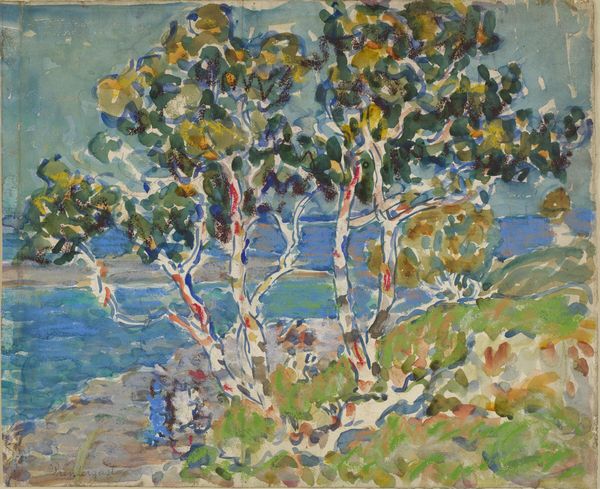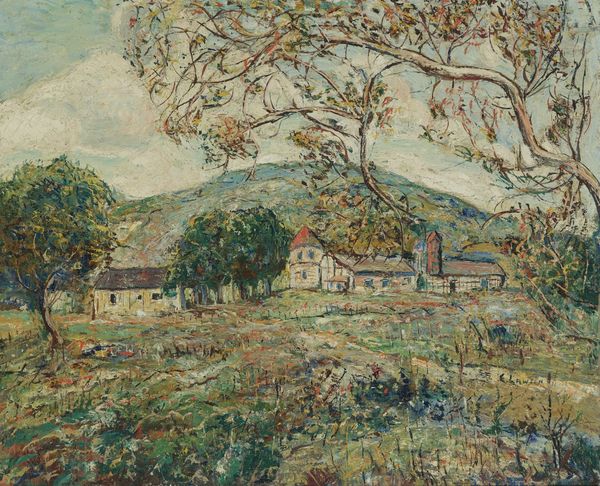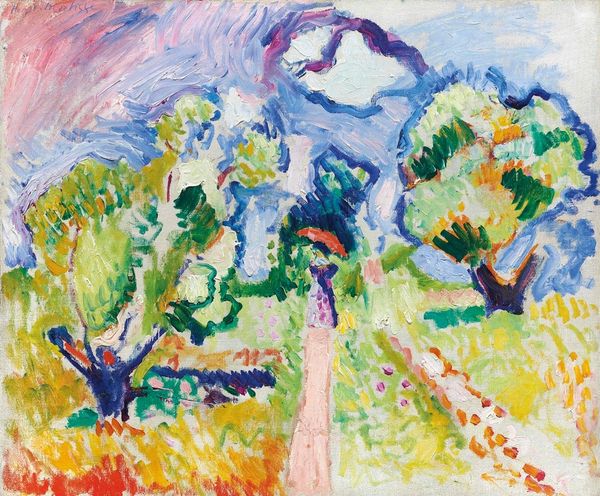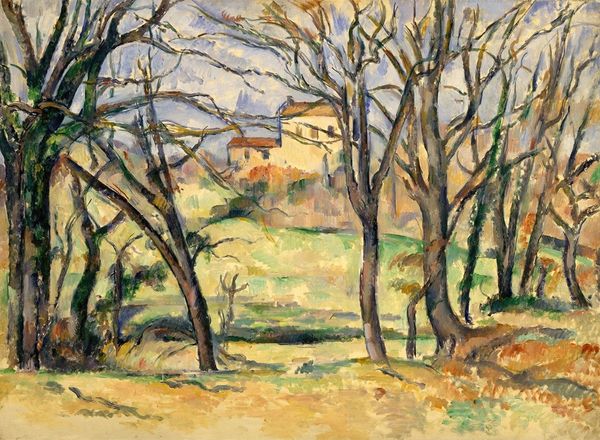
painting, plein-air, oil-paint
#
painting
#
plein-air
#
oil-paint
#
landscape
#
oil painting
#
expressionism
#
expressionist
Copyright: Public domain
Editor: So, here we have Charles Reiffel’s “Summer Design,” an oil painting from 1917. I’m really drawn to the bold strokes and almost chaotic composition, but it still manages to feel really peaceful and lush. What underlying symbolism might be at play here? Curator: An excellent question! While seemingly just a landscape, consider the intentionality behind such a "natural" scene. The thick, almost frenzied brushstrokes aren't just capturing light, but perhaps the energy of nature itself. It invites reflection about nature’s untamed vitality. Notice the placement of the home in the distance. What meaning do you draw from that placement? Editor: It almost looks hidden, as if nature is intentionally obscuring what lies within the cultural context. It suggests a sort of retreat from the man-made structures. I can sense something idyllic in its tone, a desire to go back to our roots. Curator: Precisely. Reiffel paints the symbols of cultivated tranquility –the sheltering trees, fertile land– all recurring motifs in our collective unconscious. Think about the era: World War I raging. Does the romanticized landscape become more potent considering the timing of its creation? Is it about a cultural longing for refuge, for an undisturbed haven, deeply embedded within us all? Editor: Absolutely. Seeing it in that context makes the emotional impact much more visceral, almost like an escape. I guess the way art captures shared emotions from history is what's amazing. Curator: Indeed. It serves as a visual bridge, linking the individual experience to shared cultural memory. We must constantly question what these pictorial tropes say about human needs, across generations. Editor: Well, I definitely have a new appreciation of what to look for when analyzing art of that period. I didn’t expect a seemingly innocuous landscape could carry that symbolic weight.
Comments
No comments
Be the first to comment and join the conversation on the ultimate creative platform.
